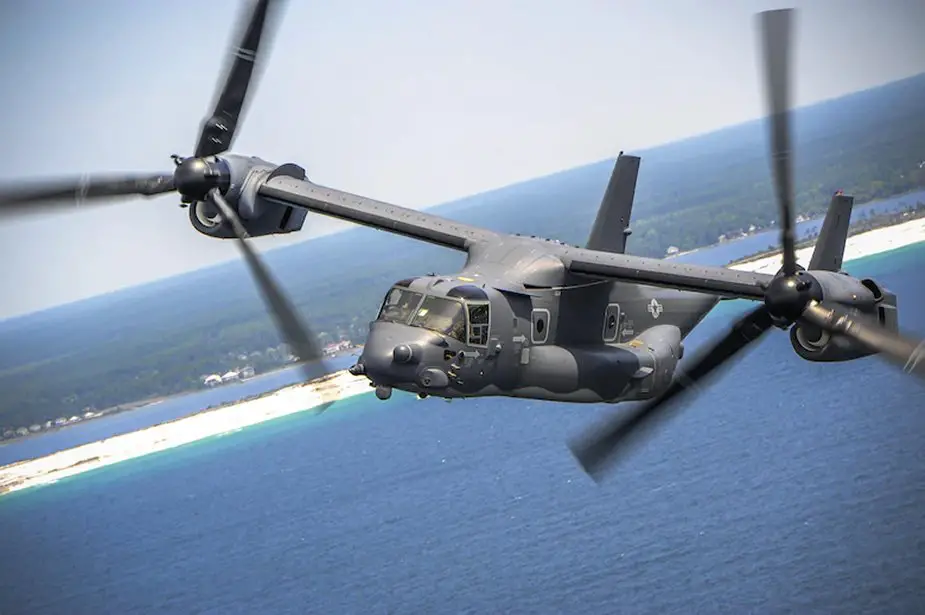According to a press release published by Boeing on September 23, 2021, the first Air Force CV-22 Osprey designated for nacelle improvement modifications arrived at Bell’s Amarillo Assembly Center. The aircraft is part of an ongoing process by Bell Textron Inc., a Textron Inc. company, and Boeing (together referred to as “Bell Boeing”) to further increase Osprey’s reliability and maintainability for the Department of Defense (DOD).
Follow Air Recognition on Google News at this link
 CV-22 Osprey (Picture source: US Air Force)
CV-22 Osprey (Picture source: US Air Force)
Naval Air Systems Command (NAVAIR) awarded Bell Boeing an $81 million contract in December 2020 to complete Nacelle Improvements on the CV-22 fleet. The contract covers the completion of non-recurring elements, fabrication of nine kits, and installation of one kit. NAVAIR has an option period to cover fabrication and installation through 2025.
Approximately 60 percent of maintenance man-hours are spent in the nacelles. Bell Boeing successfully engineered more than 1,300 new V-22 part numbers to help improve the reliability and maintainability of the nacelles while also reducing repair time. The improvements are predicted to increase aircraft availability and reduce maintenance time.
Bell Boeing works closely with the U.S. Air Force Special Operations Command and other V-22 customers to pursue upgrades, reduce maintenance, and increase reliability.
NAVAIR completed the first flight with nacelle improvements on a Marine Corps MV-22 test aircraft on April 23, 2021. The MV-22 shares the same nacelle structure as the CV-22 and allowed the Bell Boeing team to receive input from NAVAIR and fleet maintainers before the first Air Force aircraft begins modifications. Bell Boeing will perform the CV modifications in Amarillo, Texas, Fort Worth, Texas, and is expected to complete the upgrades on all CV-22 aircraft by 2025.
The CV-22 Osprey is a tiltrotor aircraft that combines the vertical takeoff, hover, and vertical landing qualities of a helicopter with the long-range, fuel efficiency, and speed characteristics of a turboprop aircraft. The mission of the CV-22 is to conduct long-range infiltration, exfiltration, and resupply missions for special operations forces.
This versatile, self-deployable aircraft offers increased speed and range over other rotary-wing aircraft, enabling Air Force Special Operations Command aircrews to execute long-range special operations missions. The CV-22 can perform missions that normally would require both fixed-wing and rotary-wing aircraft. The CV-22 takes off vertically and, once airborne, the nacelles (engine and prop-rotor group) on each wing can rotate into a forward position.
The CV-22 is equipped with integrated threat countermeasures, terrain-following radar, forward-looking infrared sensor, and other systems that allow it to operate in various austere conditions.
















